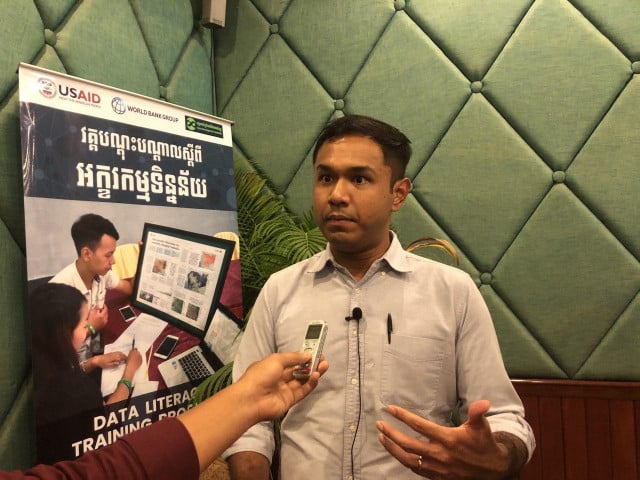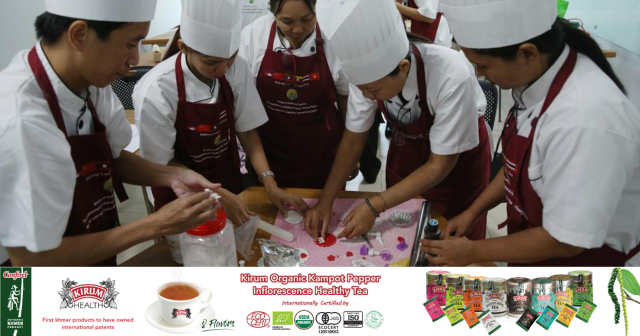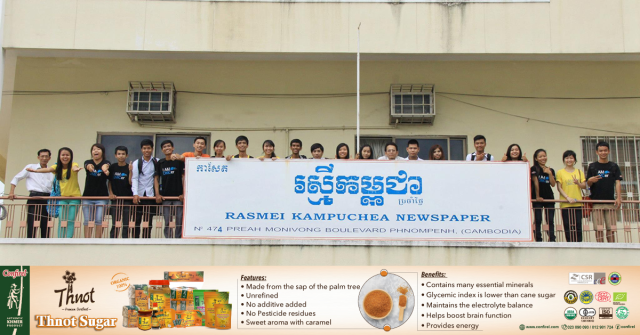How Rice Has Dictated People’s Lives at Angkor

- By Ky Soklim
- March 30, 2024 10:30 AM
SIEM REAP — In a dim twilight with a cool February breeze, the Cambodians of Angkor young and old recently gathered for the annual fishing celebration and to mark the end of the annual cycle dictated by paddy rice farming.
As Ang Choulean, a renowned ethnologist of the Royal University of Fine Arts, explained to Cambodianess senior journalist Ky Soklim, this event known as Lerng Meak revolves around a larger historical and traditional picture involving rice production.
_1711727551.png)
Caption: Ethnologist Ang Choulean (left) spoke to ThmeyThmey senior journalist Ky Soklim (right) in Siem Reap province. Photo: Cambodianess
Sitting on the ground level of a traditional Khmer wooden house built on stilts in the Prasat Bakong district of Siem Reap province, Choulean recently explained, on a cloudy day, both briefly and thoroughly this tradition.
Ky Soklim: Based on your years of ethnological research in the region of Angkor and beyond, what is the correlation between this fishing celebration and rice production?
Ang Choulean: In the archaeological region of Angkor, the village of Bangkoang has proven to be one of the most important locations for this fishing celebration held every year. However, it is not limited to Angkor. This celebration takes place in many other villages in the country, and it was even more commonly held in the past.
_1711727705.png)
Caption: Villagers in Siem Reap province harvasting paddy rice. Photo: Ky Pheasith
Before we can understand the meaning of the fishing celebration, we first need to look at how people’s lives depend on rice or the “cycle of rice” to be more specific.
From year to year, how local people go about their daily lives is largely dictated by rice production. It is also important to remember that villagers often make use of the lunar calendar to keep track of time, and not the solar calendar that is more commonly used in urban and modernised areas of the country. Across regions, different groups of villagers may value different times of the rice cycle. Some will put more efforts on the opening part, others on the closing part, and some will put their efforts on both.
_1711727782.png)
Nevertheless, this is a very big topic to address in a short time. So, it is better to focus on the region of Angkor.
The start of the rice cycle falls in the lunar month of Vaisakha (April-May) while the closing of the rice cycle falls within the lunar month of Magha (January-February). Although the actual day may vary due to different reasons, the month is pretty much the same from year to year.
The opening of the rice cycle is called “chlong chetr,” which means “the passing of Chaitra month (onto the Vaisakha month).” During the month of Vaisakha, when the weather is good, rain starts to fall, and people begin to “wake up” the soil for agriculture. It has nothing to do with the Khmer New Year celebration in April. It just depends on the cycle of the season. At the end of the rice cycle, in the month of Magha, everyone cultivated their paddy rice and stored them in granaries. This is a time for relaxation or vacation, if you want to put it that way. Now, here comes the fishing celebration.
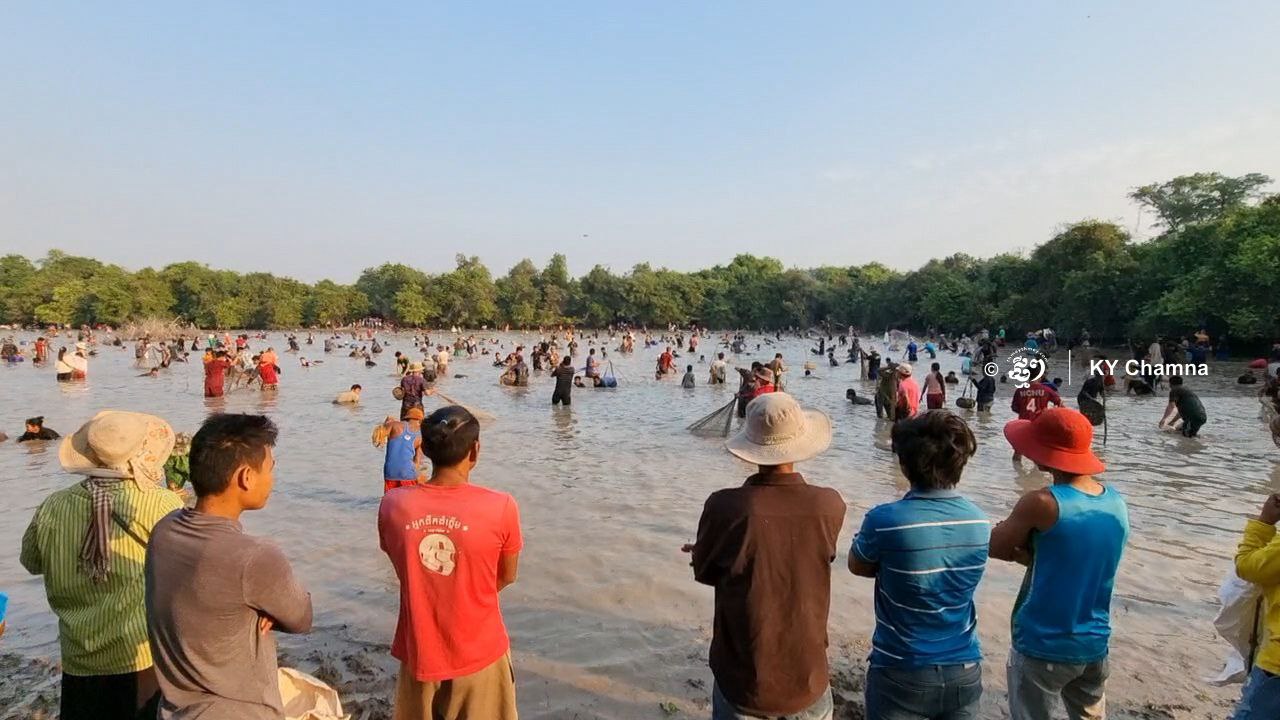
Caption: The protected pond of Bangkoang village during the fishing celebration on Feb 11, 2024. Photo: Ky Chamna
In the village of Bangkoang, there exists a large pond full of fish that is shaped like a rectangle. However, the shape may change over time. Before the fishing celebration is held, villagers deploy buffaloes to stir up the water and break lose any overgrown vegetation. In the middle of the pond, villagers also construct a wooden area for the fish to seek shelter and spawn during hot days.

Since this location is a valuable asset in the local culture, the pond, administered by an informal committee inside the village, can only be allowed to be fished once a year during the month of the Lerng Meak ceremony, which is during the closing of the rice cycle.
_1711728003.jpg)
At this time, hundreds of people fish at once, creating a scene amusing to onlookers. To prevent excessive catches, only small and simple traditional fishing gears are allowed. Each fisherman can get a handful of fish since the pond has been protected for more or less a year.
_1711728044.jpg)
Right after the celebration, people will spend some time relaxing on the land around the pond, grilling fish and chitchatting. Most of the catch is stored at people’s homes for the upcoming Lerng Meak ceremony during which traditional food is cooked for religious purposes and daily consumption.

As a side note, the name of Bangkoang village can be traced back to an inscription from the 9th century. At the time, it was likely pronounced “v’koang.” Today, we still can see a stone stele situated at the pond itself. The inscription does not mention the fishing celebration, it only mentions the name of the village. Nevertheless, this finding has sparked my interest.

Caption: An ancient stone stele at the Bangkoang pond. Photo: Yi Sotha
During the Lerng Meak ceremony, villagers would gather and pay tribute to the shrine of their guardian deity, using the fish they had just caught. This could be Nom Banh Chok, a traditional Khmer sticky rice noodle soup, or other dishes.

Caption: Nom Banh Chok (Khmer sticky noodle soup) was served at a religious hall not far away from the Bangkoang pond on Feb 13, 2024. Photo: Isa Rohany
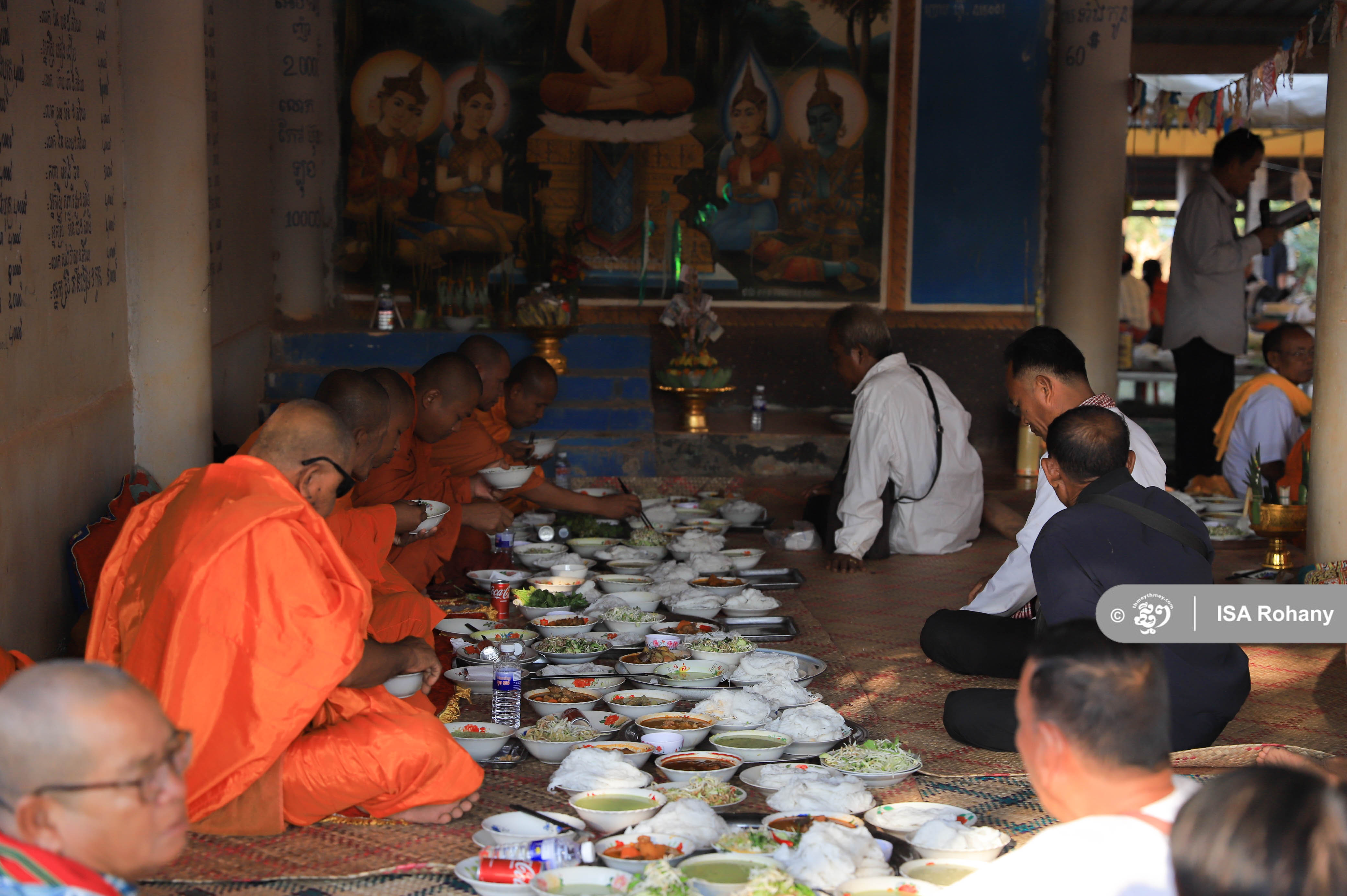
In some places, monks today are invited to share people’s meal, say prayers as well as offer advice in line with Buddhism. Villagers may also conduct a small ceremony called “pun phnom sruv” or “the making of a small rice hill.” This small chunk of paddy rice is then offered to the monks for their food supplies.
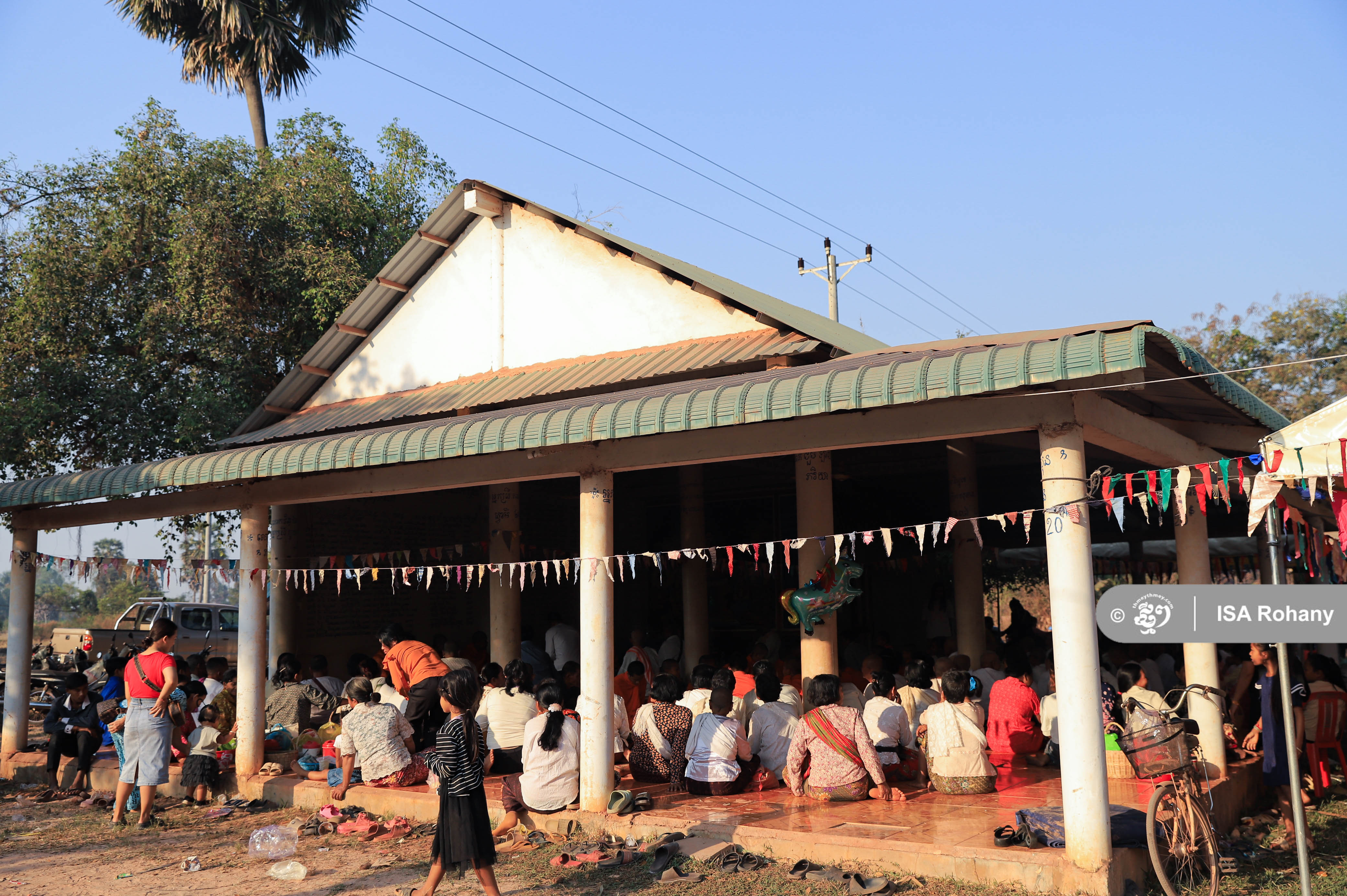
Caption: A community religious hall where people gathered at the village of Bangkoang after the fishing celebration on Feb 13, 2024. Photo: Isa Rohany
More than just a time for making prahok (a type of fermented fish) for another year-long consumption, this “vacation” period for farmers is also a time for weddings, especially during the lunar month of Phalguna (February-March). Since everyone is free from doing farmwork, it is hard to refuse to join a wedding celebration.
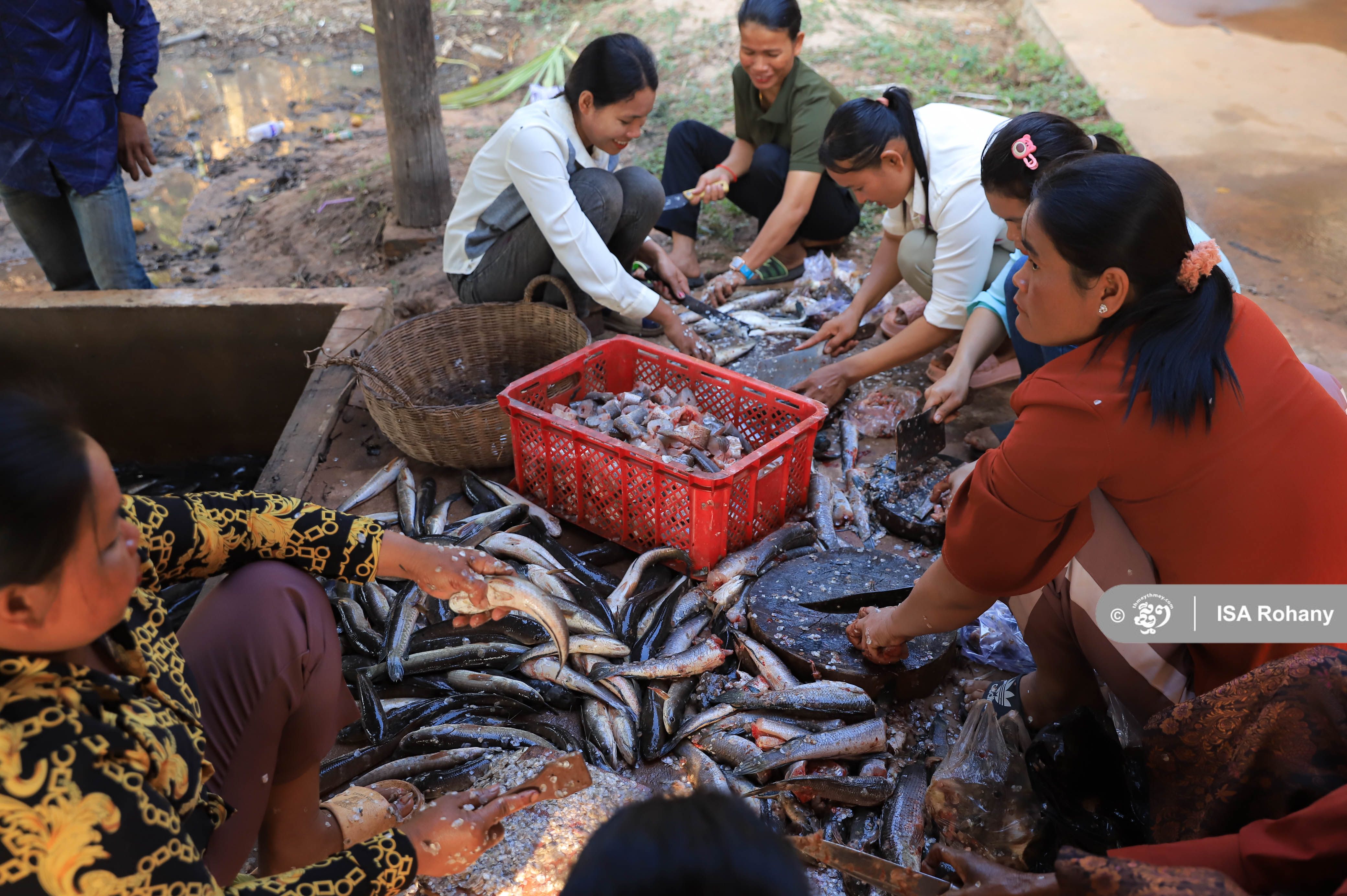
Caption: Villagers prepared their fish that were caught at the Bangkoang pond for the Lerng Meak ceremony. Photo: Isa Rohany
During my time with villagers, I humbly and simply asked some of them when was the first month of the year. They answered almost as if this was second nature to them that the first month of the year is Vaisakha (April-May). This is simply because the month of Vaisakha is when they start rice planting for the coming year.
Rice is very important for the village. In Cambodia rice is considered feminine. Some rice variants also start with the name “neang” or “lady.” When paddy rice becomes cooked rice, some people even call it “preah me,” which translates as “female deity” or “goddess.”
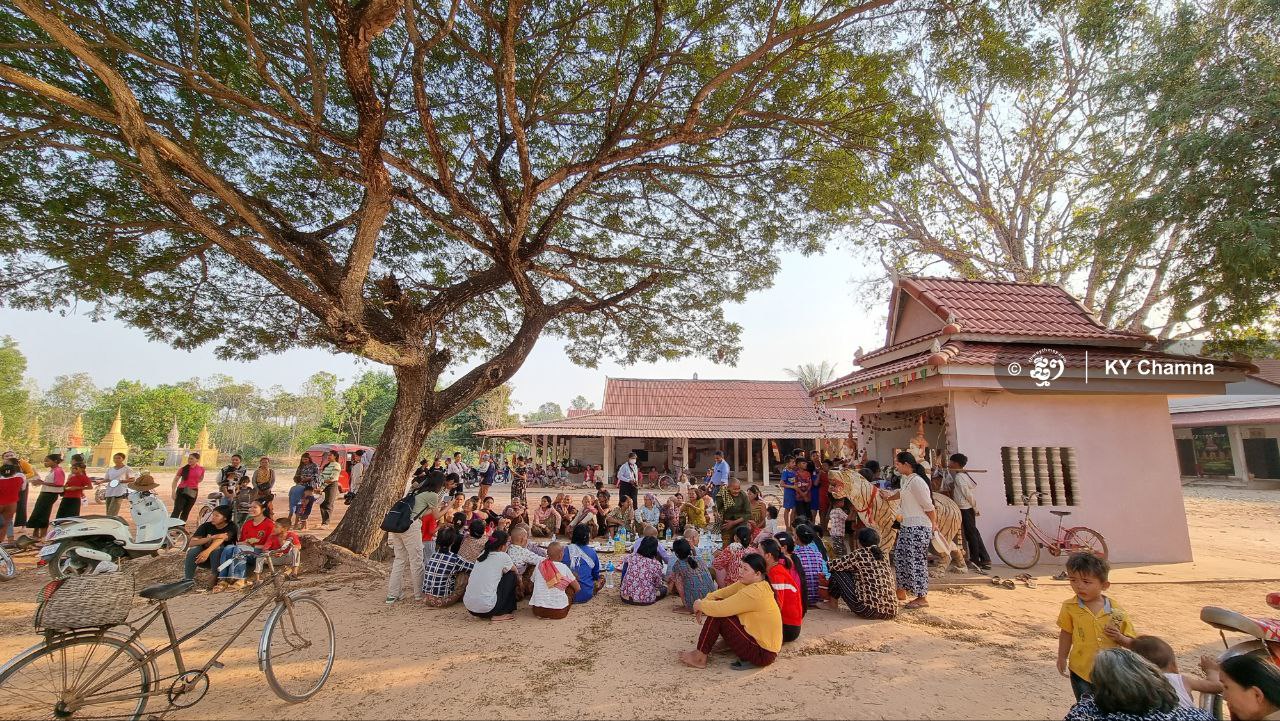
Caption: Villagers of Siem Reap province gather in front of a tutelary deity shrine to conduct the Lerng Meak ceremony on Feb 12, 2024. Photo: Ky Chamna
_1711728766.jpg)
Caption: Senior members of the villagers offer dishes to the tutelary deity during the Lerng Meak ceremony on Feb 12, 2024. Photo: Luy Sireyreaksa
_1711728891.jpg)
Caption: Junior members of the village in Siem Reap province sit in front of the tutelary deity shrine during the Lerng Meak ceremony on Feb 12, 2024.
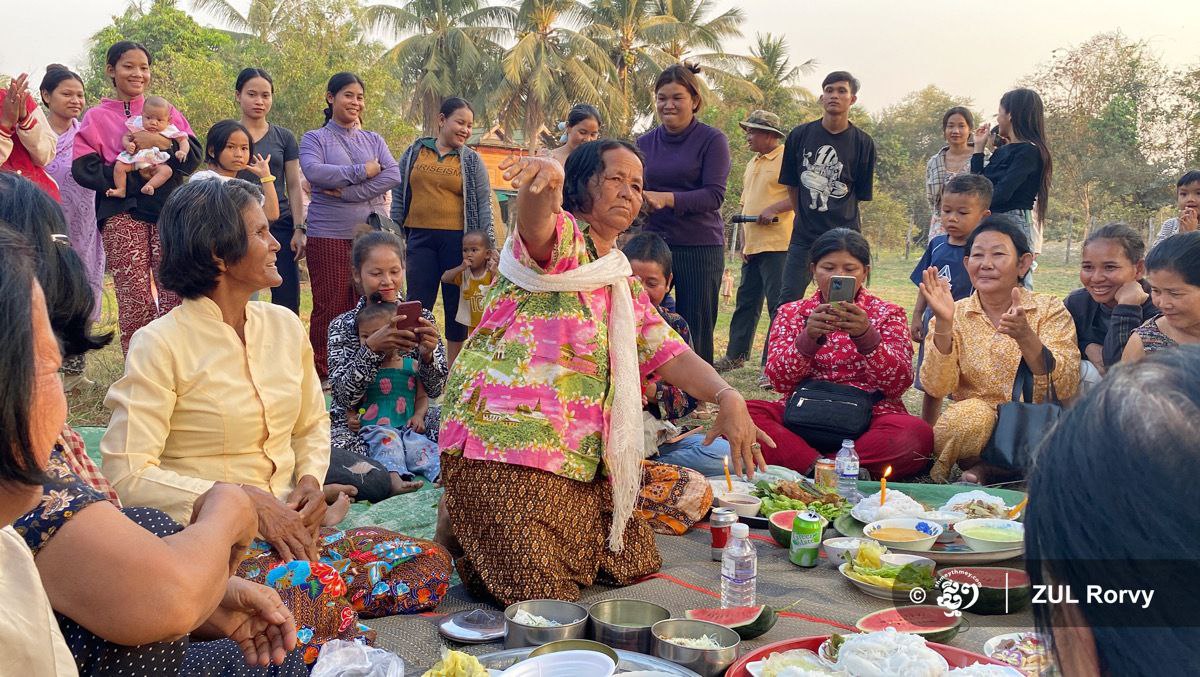
Caption: Some senior villagers perform spiritual dances during the Lerng Meak ceremony on Feb 12, 2024. Photo: Zul Rorvy
___________________________
Conducted in Khmer for ThmeyThmey Digital Media, this interview was translated by Ky Chamna for Cambodianess.
To watch the original interview in Khmer language, click here.
Related feature stories:
Traditional Fishing Ceremonies to Be Celebrated in Mid-February
Celebrating the End of Rice Harvesting Season with Huge Splashes






